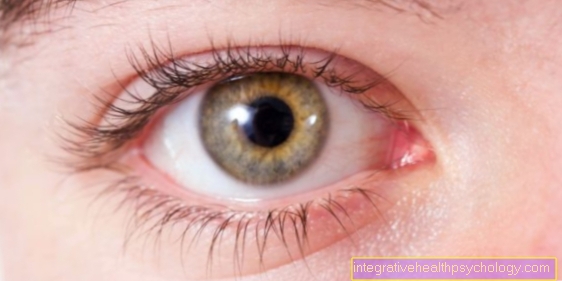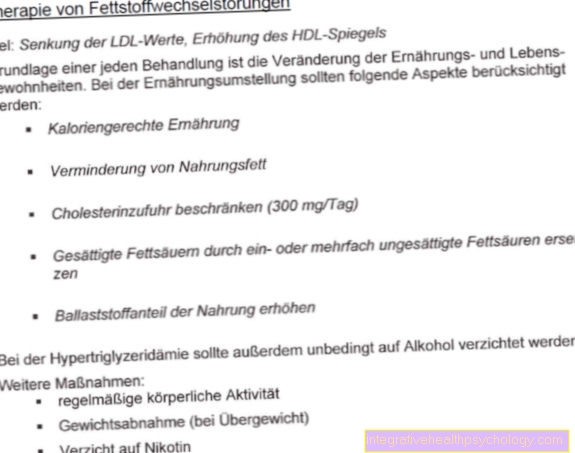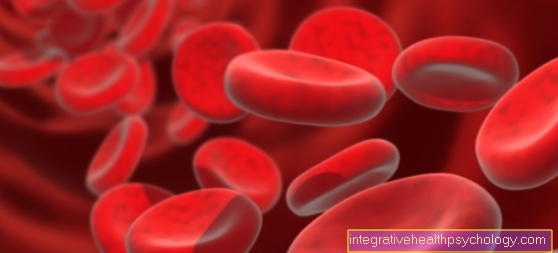Leukemia rash
introduction
Leukemia is a malignant disease of the blood in which there is an uninhibited production of immature cells and a decrease in the number of functional blood cells. This disease is also known as blood cancer. This can manifest itself through a large number of initially mostly unspecific symptoms. Among other things, skin changes such as a rash can occur.
Receive more specific information about the topic Leukemia.
However, a rash can have many different causes. In most cases these are harmless and only in extremely rare cases is it a sign of leukemia. In addition, there is no typical rash that can provide information about the possible presence of this disease.
If there are no other symptoms besides the rash, leukemia is usually not to be feared.
Find out which other Causes a rash can trigger.

Causes of the rash
Skin rash is one of the most common ailments in humans. In the vast majority of cases, it is harmless and goes away after a while.
Only in extremely rare cases is leukemia the cause. However, even if leukemia is present, a rash rarely occurs. The constellation of a skin rash caused by leukemia is therefore extremely rare.
In principle, all organs can be affected in leukemia. The cause of a rash can be that the leukemia cells penetrate the skin.
The most common causes of a rash in general, however, include infections caused by viruses and bacteria, drug side effects, or allergic reactions.
Diagnosing leukemia as a cause of a rash
In order to make a diagnosis of a rash, questions should first be answered, such as when and where the changes occurred, how they developed and whether there are any other symptoms.
The doctor will also look at the rash and look for typical patterns. If the rash is the only complaint, there is usually no need to conduct examinations to rule out or detect leukemia.
The doctor can only consider a malignant disease such as leukemia as a rare but possible cause of the rash and other complaints if the patient also reports symptoms such as decreased performance, unwanted weight loss or an increased susceptibility to infections.
Do these symptoms apply to you? Read here how to recognize leukemia.
If the doctor finds indications of such a disease from the conversation and the examination, he may take a blood sample in order to determine or rule out further indications of leukemia or another serious illness.
If a blood count that is suspicious of leukemia is actually shown, the next step is to arrange for a sample to be taken from the bone marrow in order to be able to make a diagnosis.
However, if the conversation and examination do not reveal any evidence of a dangerous disease such as leukemia, it is often advisable to forego further diagnostics and to wait first. Newly appeared rashes often go away on their own after a while.
Concomitant symptoms
If leukemia is responsible for a rash, other accompanying symptoms of the blood cancer can also be expected. However, these are usually very unspecific. This means that even if you have several of the possible symptoms, it does not necessarily mean that leukemia is the cause.
Nevertheless, in such a case, an early presentation to the doctor for clarification is advisable. Typical accompanying symptoms can be:
- Reduction in performance
- Exhaustion
- persistent fever with no apparent cause
- unwanted weight loss
- night sweats
- paleness
- Shortness of breath
- increased susceptibility to infections
- Impairment of the blood's ability to clot
itching
In many cases, a rash is accompanied by itching in the affected areas. A rash caused by leukemia can also cause itching. However, since skin symptoms are only caused by leukemia in extremely rare cases, more frequent symptoms should be considered first.
Skin spots
If the rare case occurs that leukemia is present, in which the cancer cells attack the skin, then various skin changes can occur. Possible examples are skin spots, thickenings, or nodules.
However, skin spots can be found in very many people and in the majority of cases have a harmless cause. However, new or suddenly changing patches of skin should be examined by a doctor. There may be an illness that requires treatment, with leukemia even then being one of the absolute exceptions.
Therapy for a leukemia-related rash
If a rash is diagnosed with leukemia as the cause, treatment is based on the form of the underlying disease.
In acute leukemia, the focus is on the use of highly effective drugs that inhibit cell growth in the form of chemotherapy. This treatment is intended to inhibit the spread of the malignant leukemia cells and, at best, to destroy them.
Often, healing can only be achieved through a complex stem cell transplant from a suitable donor.
If the cause of the rash is chronic leukemia, the decision on treatment will be based on the subtype of the disease, as well as the stage of the disease and the patient's general condition.
The options range from chemotherapy to treatment with special drugs that target the tumor cells to the option of waiting and not initiating any treatment.
The rash is not treated separately but usually regresses when the underlying condition is treated effectively.
Difference in rash in chronic and acute leukemia
In principle, any form of leukemia can also be accompanied by a rash. However, there are no clear differences between the rash that can occur in acute leukemia and the possible skin manifestations in the chronic form.
In most cases, neither form of leukemia will result in a rash caused by this condition. Acute and chronic leukemia are both malignant diseases of the blood, but they usually differ greatly in their extent and course.
Put simply, acute leukemia usually has to be treated aggressively as quickly as possible, as it can often be fatal in a short time.
Learn more about
- Acute myeloid leukemia &
- Acute lymphoblastic leukemia
Chronic leukemia, on the other hand, usually takes a rather insidious course and the symptoms often only increase after years. The treatment required is usually less aggressive. In some cases, therapy can even be dispensed with entirely.
Read something about
- Chronic Myeloid Leukemia &
- Chronic lymphocytic leukemia
A rash cannot tell whether the leukemia is chronic or acute. This requires medical tests of the blood and bone marrow.























.jpg)





